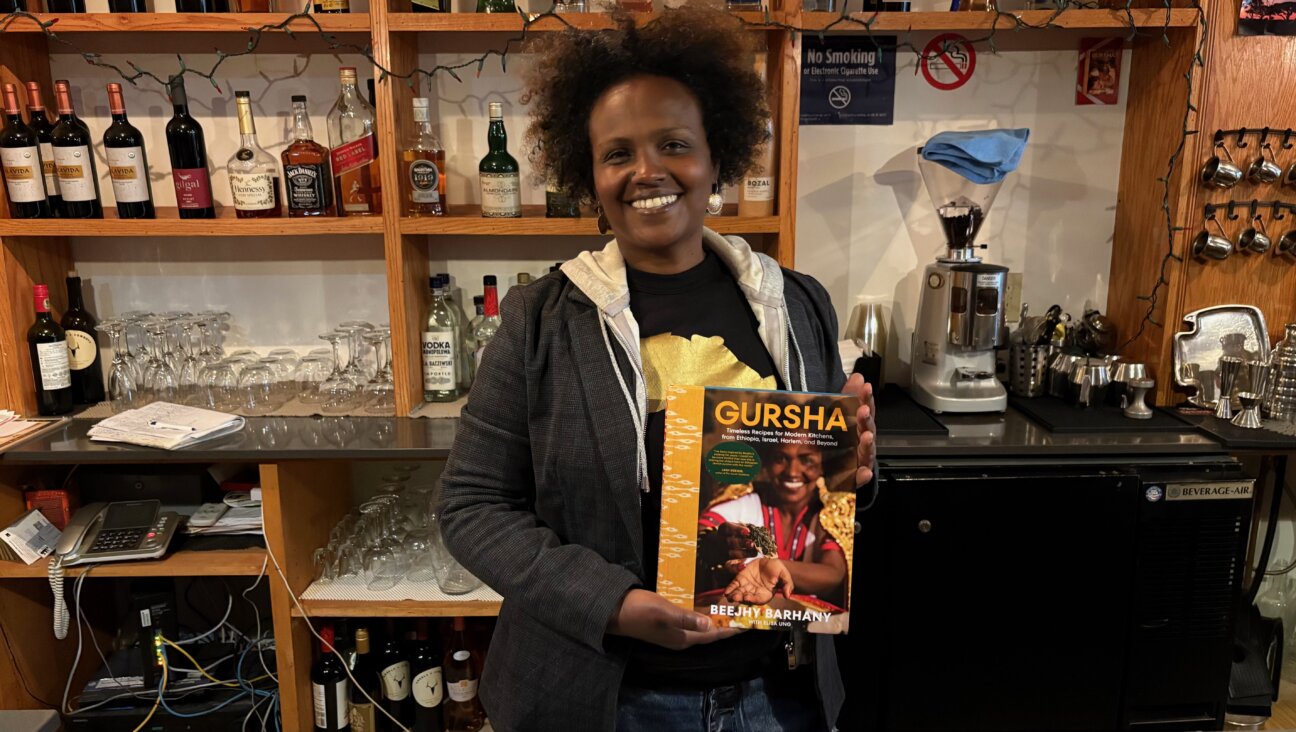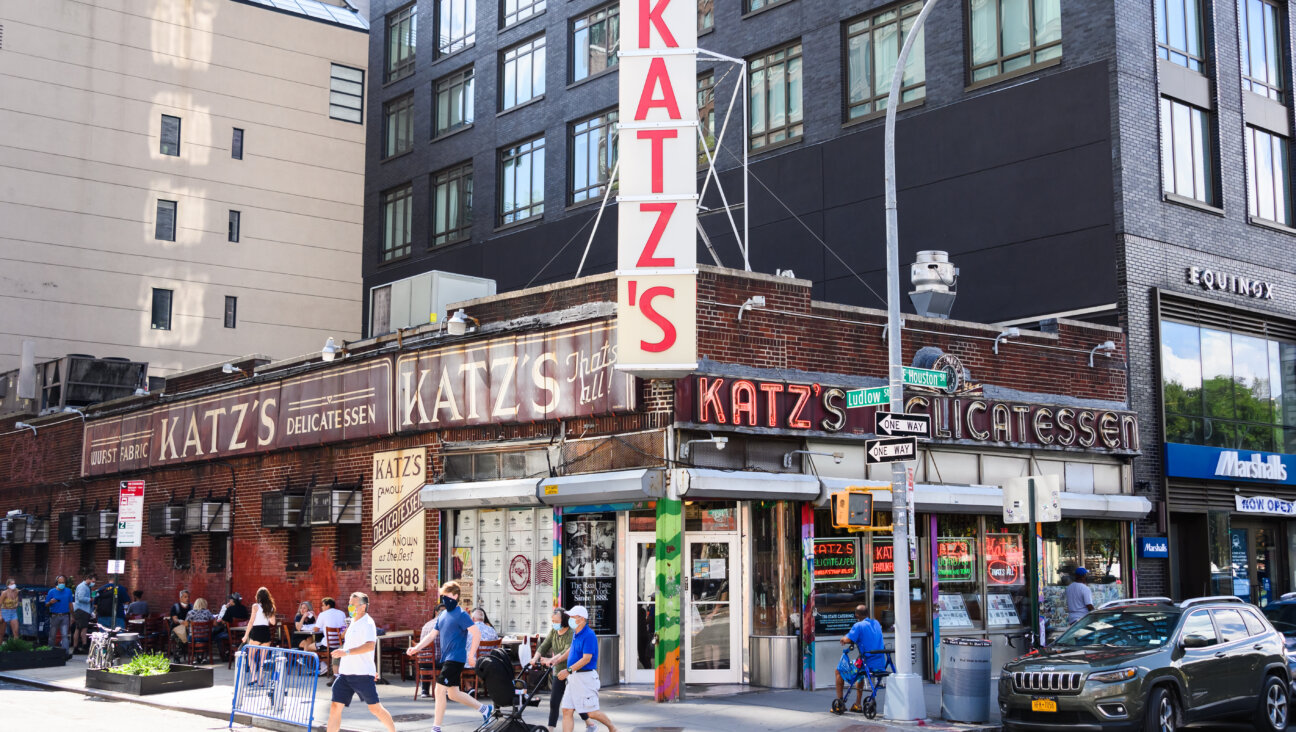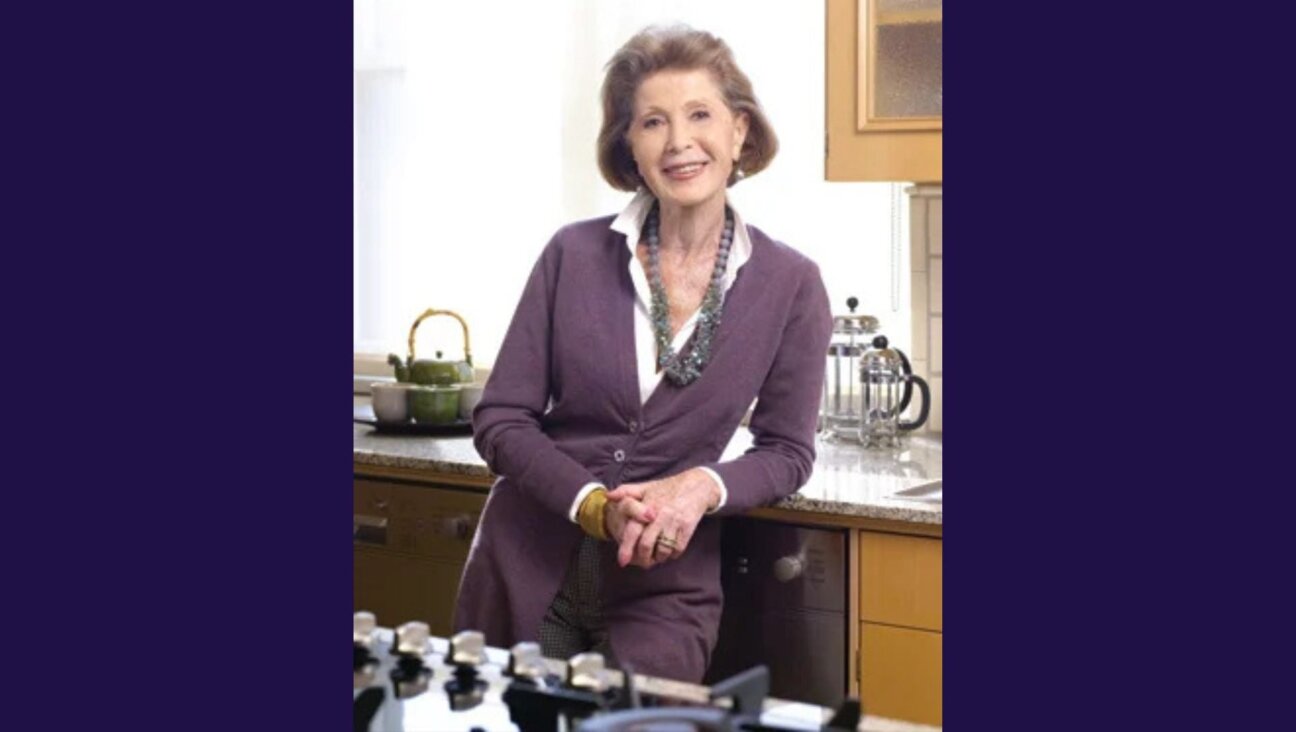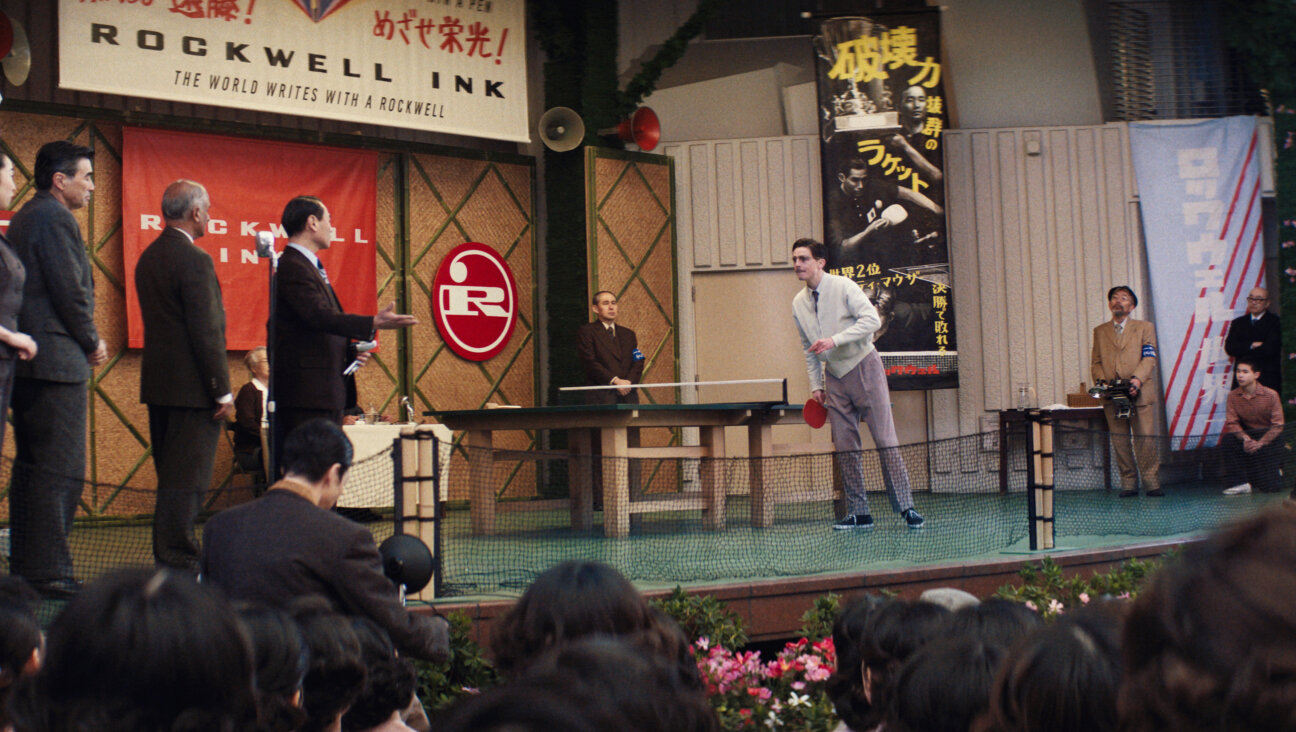In gentrified Manhattan, one Jewish luncheonette strives to keep the faith (except for the bacon part)
S&P, a nearly 100-year-old lunch counter, serves up sandwiches and old-school charm with none of the frills
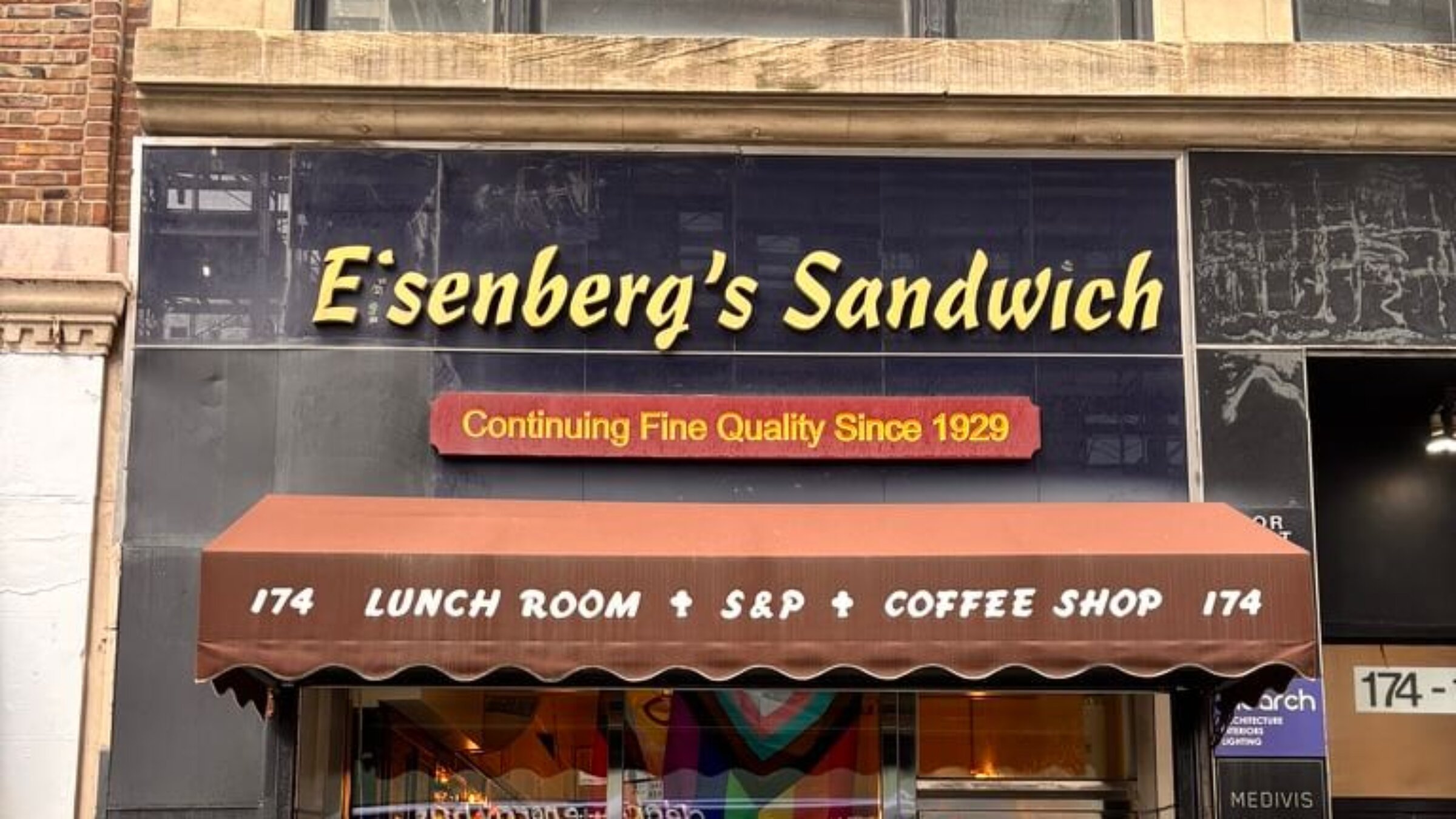
S & P as seen from the street Photo by Clara Shapiro
Dig, if you will, a pastrami sandwich. A wad of meat and swiss cheese slapped with creamy slaw and Russian dressing, bulging between two slices of rye bread. A juicy pickle on the side. That’s the “Flatiron Delight.” Or maybe you’ll go for the “Mel Brooks,” a turkey and corned beef fusion sandwich with a subtle smarting of mustard. Or a forgotten Depression-era luncheonette classic like “Peanut Butter & Bacon on Griddled White.” Or kasha varnishkes with a banana and sour cream.
Such are the treasures to be found at S&P (formerly Eisenberg’s, and formerly S&P before that), a nearly hundred-year-old lunch counter sandwiched between the Aritzias and Lululemons of 5th Avenue. In a territory full of confusing services such as the “vampire breast lift” and “athletic fit performance fabric menswear,” S&P distinguishes itself with its clear sense of purpose: “A PLACE TO EAT SINCE 1928,” a bright yellow sign in the window declares to passersby.

A lot has changed over the past hundred years at S&P, and yet not that much. S&P has changed names. It’s had at least eight owners since its founding by Austrian-Jewish immigrants Charles Schwadron and Ruben Pulver (the original S&P), who opened the luncheonette in 1928 to serve garment workers in the district. A year later, Russian immigrant Monus Eisenberg bought the restaurant, marking the beginning of the “Eisenberg’s” era, which continued under one owner or another until 2018, when copyright claims on “Eisenberg’s” rendered the name defunct.

Nevertheless, much of the luncheonette’s original character remains.
S&P has still got a tenement narrowness, the original marble counter, and rickety red vinyl stools to assuage die-hard fans who fear the bougie-fication of classic city joints like S&P.
“I’ve been coming 10 years,” one gruff older gentleman told me at the counter. His gruffness was reasonable, given that I’d interrupted what looked like an intimate rendezvous with his sandwich. I asked what he was eating. “An excellent sandwich,” he replied.
As was the case with this particular customer, the charm of S&P comes from its old-school practicality, its refusal to hold truck with “lattes” and other such mishegas. Though authenticity is a nebulous quality, retaining the experience of an authentic luncheonette mattered to Eric Finkelstein and Matt Ross, who took over the restaurant in 2022 after a successful decade of co-running Court Street Grocers, an adored sandwich chain throughout Brooklyn and Manhattan.
“We were afraid that other people would make a place that was about luncheonettes, but not a luncheonette — like a luncheonette-themed restaurant,” Finkelstein told me. “We both felt like this type of restaurant is so important to New York, but there’s almost none left.” Finkelstein and Ross are bearded, bespectacled and baseball-capped men in their early forties— they look like lumberjack-hipsters, but they’ve got the plainspoken frankness of fellows from the previous century. When it comes to S&P, they’ve got a motto: “We want it to be the way you expect it to be.”
The pair’s approach to revamping S&P preserves as much of the past as possible without candying it into kitsch. “When it was Eisenberg’s, the back room was dreadfully unappealing,” Ross says. “When we found it in ’99 or something, it kinda felt like a storeroom, like refrigerators on wheels.” Gone is that savage age. These days, the back room is lined with emerald-green vinyl banquettes, and there are no refrigerators in sight. “But you know what’s really fun?” Ross asks. “When people walk in, they say, ‘Oh, you guys didn’t do anything here.’”
One thing that has changed a bit is the menu. Though it has always been anchored by Jewish classics like “Potato Knish (Square)” and “Chopped Liver on Iceberg Lettuce w/Saltines and Rye,” the restaurant has long been making outreach efforts to goyim and other bacon-lovers with decidedly unkosher double-whammies such as cheeseburgers and ham-and-cheese sandwiches. Finkelstein, who grew up Jewish in Hollis Hills, Queens, reckons that “there’s probably less treyf on the menu now than there was. [Eisenberg’s] had clam chowder every Friday. They had shrimp salad. I think they did pork and beans. Plenty of bacon.”
Not that Finkelstein considers plenty of bacon a crime. He and Ross are proud of menu items like the tuna melt that would have probably made the original S and P shudder.

“It’s very simple, but there was a lot that went into it beyond just tuna fish,” Ross said enthusiastically. “We try different tunas and different ratios.” The pair has even named a sandwich “The Lil’ Shonda” in homage to Finkelstein’s father’s horror upon learning his son planned to combine pastrami with cheese.
S&P’s commitment to the classics, both preserving them and innovating on them, recently earned the luncheonette a spot on this year’s New York Times’ 100 Best Restaurants in New York City list.
“It’s a classic New York spot,” an older man dressed for the golf course in a blue polo and blue baseball cap told me. He and his grown daughter were sitting at a table in the back, picking over the remnants of lunch. “I got the Mel Brooks last time, the BLT this time. It’s all delicious.”
“I like to try everything,” added his daughter.
There wasn’t much left on either of their plates. A few crusts. Pickle stub. Still, the pair stuck around to chat, digest, and drink the rest of their water out of those red plastic tumblers with wonderfully pebbly sides. Just the way you’d expect.


